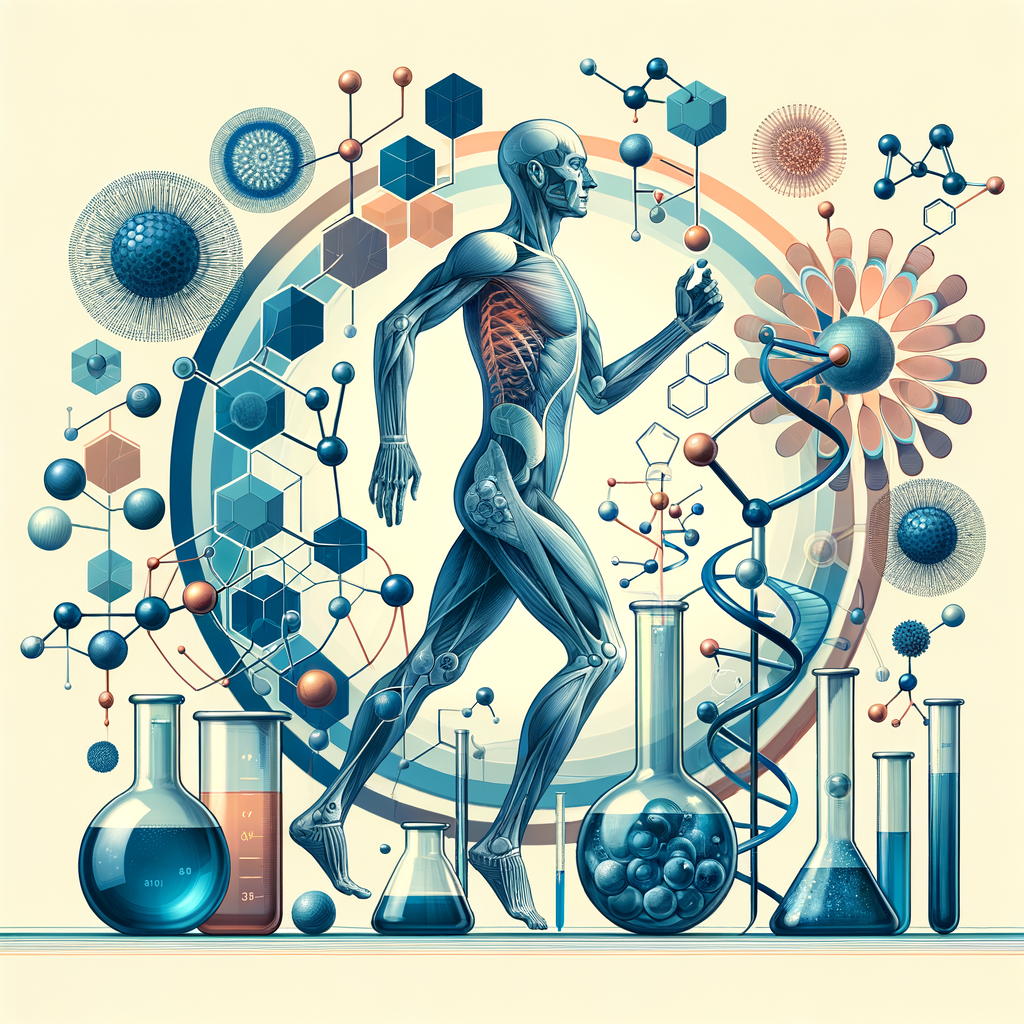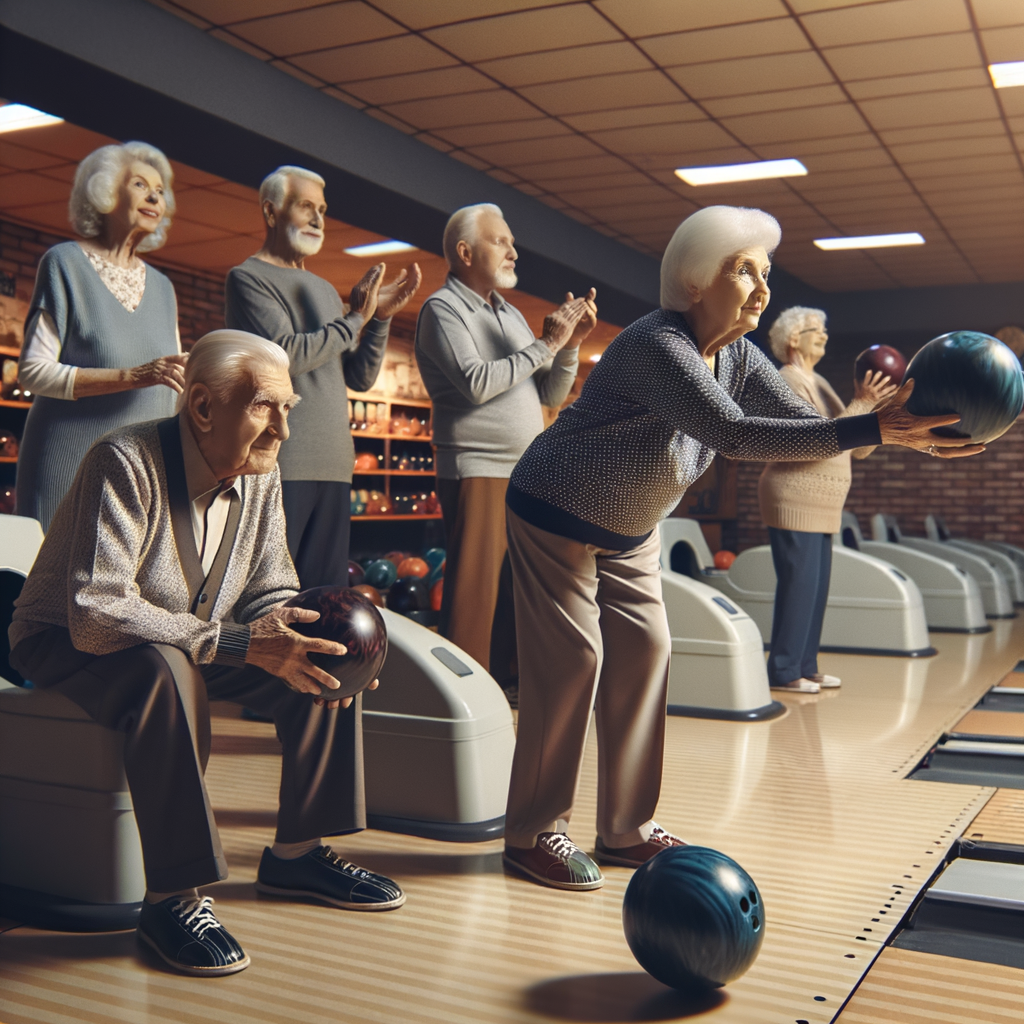- Understanding Applied Functional Science
- Principles of Applied Functional Science
- The Science Behind Applied Functional Science
- Applications of Applied Functional Science
- Conclusion
- The Role of Applied Functional Science in Injury Prevention and Performance Enhancement
- Case Studies in Applied Functional Science
- Training and Certification in Applied Functional Science
- The Future of Applied Functional Science
- Conclusion: The Impact of Applied Functional Science
Imagine your body as a complex machine, finely tuned and capable of incredible feats. Now, what if you could optimize that machine using the secrets of its own design? That's where Applied Functional Science comes in.
Have you ever wondered why some people move with such ease, while others struggle with the simplest tasks? AFS is the key to unlocking this mystery. It's not just another buzzword; it's a practical approach that blends biology, physics, and behavioral science to improve how we move, live, and function.
By delving into the principles of AFS, you'll discover how to tap into the body's natural mechanics. This isn't just for athletes or fitness pros; it's knowledge that everyone can use to feel better, reduce pain, and enhance their daily performance.
Whether you're looking to overcome an injury, boost your physical capabilities, or simply move through life with more comfort and ease, AFS offers insights that can make a real difference. So, if you've ever been curious about the science behind movement and how you can apply it to your life, stay tuned. This article will walk you through the fascinating world of Applied Functional Science and reveal how it can impact your well-being.
Understanding Applied Functional Science
If you've ever been to physical therapy, you might have noticed that the focus is often on the area where you're experiencing pain or discomfort. This is the traditional approach, and it's certainly not without merit. But what if we could go a step further? What if we could not only alleviate your symptoms but also address the root cause of your discomfort? This is where Applied Functional Science (AFS) shines.
AFS is a game-changer because it looks at the whole picture. Instead of zeroing in on the injured joint or muscle, AFS practitioners dig deeper to uncover what led to the issue in the first place. They consider the entire body and how it functions as a unit. This holistic approach can reveal underlying problems that might have been overlooked in a more traditional therapy setting.
But don't get me wrong. Traditional physical therapy has its place. It's great at improving joint strength and reducing pain. However, AFS takes it a step further by focusing on restoring lost function due to injury. It's not just about making you feel better; it's about getting you back to your old self, or even better.
Another key difference is the way AFS uses therapeutic exercises and manual treatments. In traditional therapy, these are typically focused on the muscles around the affected joint. But in AFS, they're individualized based on your specific mechanics and the functional tasks affected by your injury, including the alignment and balance of the entire body which is essential in postural therapy. This tailored approach can lead to more effective treatment and faster recovery.
Finally, AFS is about treating you as a whole person. That means taking into account your personal goals and what drives you, whether it's returning to a favorite sport or incorporating everyday tools like pool noodles for low-impact exercises to improve stability and coordination. It's not just about getting you back on your feet; it's about helping you live your best life.
So, while traditional physical therapy can be effective, AFS offers a more comprehensive approach. It's about understanding the root cause of your discomfort and addressing it head-on. It's about treating you as a whole person, not just a collection of symptoms. And ultimately, it's about helping you move and live better.
Principles of Applied Functional Science
Alright, let's dive into the principles of Applied Functional Science (AFS). These principles are the backbone of this approach, guiding how AFS practitioners assess and treat their patients. There are three key principles to understand:
- Three-dimensional movement
- Relative motion
- Joint centration
First up is three-dimensional movement. This principle recognizes that our bodies are designed to move in all three planes of motion: forward and backward, side to side, and rotationally. Think about it - when you're walking, running, or even just reaching for something on a high shelf, you're not just moving in one direction. You're using all three planes of motion. AFS taps into this natural movement to help you move more efficiently and comfortably, much like the gentle, flowing movements practiced in Tai Chi, which are particularly beneficial for seniors seeking to maintain mobility and stability.
Next is relative motion. This principle is all about understanding how different parts of your body move in relation to each other and your environment. For example, when you step forward with your right foot, your left arm swings forward too. That's relative motion in action. By understanding these relationships, AFS practitioners can help you move in a way that's more natural and less likely to cause injury.
The third principle is joint centration. This is a fancy way of saying that your joints are in their optimal position. When your joints are well-aligned, you can move more freely and with less discomfort. AFS practitioners use this principle to help you maintain good joint health and avoid injuries.
Now, let's talk about the chain reaction. This concept refers to the interconnectedness of your body's systems. It starts with your feet and moves up through your body, affecting everything from your posture to your balance. The chain reaction is initiated by the ground reaction force - the force exerted by the ground on a body in contact with it.
But it's not just about your feet. The chain reaction is also influenced by the position of your pelvis, rib cage, head, eyes, hands, feet, shoulders, and arms. By understanding this chain reaction, AFS practitioners can identify and address any issues that might be affecting your movement and causing discomfort, such as those that may make running feel more challenging than it should.
So there you have it - the principles of Applied Functional Science. These principles guide AFS practitioners in their work, helping them to help you move better and live better.
The Science Behind Applied Functional Science
Now, let's delve into the science behind Applied Functional Science. This involves three main areas:
- Biomechanics and human movement
- Neurological considerations
- Physiological aspects
Let's start with biomechanics and human movement. Biomechanics is the study of motion and its causes in living things. It's all about understanding how we move and why we move the way we do. This field provides key information on the most effective and safest movement patterns, equipment, and relevant exercises to improve human movement. It's closely related to kinesiology, the whole scholarly area of human movement study.
Biomechanics is concerned with the forces that act on the body during movement and the effects of those forces on the body. It's crucial in understanding how the body moves and how to optimize movement patterns.
Next, we have neurological considerations. The central nervous system (CNS), which includes your brain and spinal cord, plays a crucial role in human movement. It's responsible for controlling and coordinating all voluntary and involuntary movements. It also processes sensory information and integrates it with motor output. So, the CNS is like the command center for your body, telling your muscles when and how to move.
Last but not least, we have physiological aspects. Physiology is the study of the functions and processes of living organisms. It's concerned with how the body works and how it responds to different stimuli. This includes understanding how the body adapts to different types of exercise and training.
So, when you look at Applied Functional Science, it's not just about the movements you're making. It's about understanding the forces at play, the signals being sent by your nervous system, and the ways your body is adapting and responding. It's a holistic approach that takes into account the full complexity of the human body.
Applications of Applied Functional Science
Now, let's explore the various applications of Applied Functional Science (AFS). AFS is not limited to one field but finds use in physical therapy, sports training, rehabilitation, and personal training.
Physical Therapy
Starting with physical therapy, AFS plays a significant role. It provides a holistic approach to functional evaluation, training, and rehabilitation. It empowers physical therapists to harness the principles of physics, biology, and behavioral science to achieve better individualized outcomes for patients. Instead of merely focusing on the symptoms, AFS targets the root cause of pain, improving neuromuscular-skeletal performance and comfort.
Sports Training
Moving on to sports training, AFS is a game-changer. It helps trainers design a limitless number of assessment variations and training techniques. This approach enhances the performance of athletes of all ages and conditions, making it a perfect complement for any sports professional.
Rehabilitation
In the field of rehabilitation, AFS shines. It offers an integrated approach to evaluation, rehabilitation, and conditioning. It enhances neuromuscular-skeletal comfort and performance, helping patients overcome barriers to successful treatment.
Personal Training
Lastly, let's talk about personal training. AFS is a valuable tool for personal trainers. It helps them build customized assessments and training programs. It also helps them understand and expand their current successes, connecting them with like-minded movement professionals.
Conclusion
In conclusion, AFS is a versatile approach used by a wide range of professionals, from physical therapists and personal trainers to physicians and yoga instructors. It's not just a method; it's a certification in Applied Functional Science that's recognized for continuing education units. It's a holistic approach that enhances the lives of people of all ages and conditions.
The Role of Applied Functional Science in Injury Prevention and Performance Enhancement
Now, let's dive into the role of Applied Functional Science (AFS) in injury prevention and performance enhancement.
Firstly, understanding the body's functional needs is crucial. AFS assesses an individual’s mobility and stability while they're performing a functional activity. It aims for optimal movement strategies to better tolerate specific loading of the tissues. This understanding allows for successful injury prevention or rehabilitation following an injury.
Next, let's talk about strategies for injury prevention. Primary prevention should include assessment of static and dynamic equilibrium, body posture, and muscle stability during various tasks. Corrective exercises, sometimes referred to as “prehab”, should be applied during the preventative phase to address patterns of dysfunction. Interestingly, emotional wellness also plays a significant role in injury prevention.
Injury prevention programs (IPPs) are a key part of training in both recreational and professional sports. These programs not only prevent injuries but also enhance performance, which can help adjust attitudes towards implementing injury prevention into daily routines.
When it comes to enhancing athletic performance, conventional thinking suggests that IPPs need to be specific to one’s sport. Sports-specific IPPs have shown the most significant improvement versus control groups. However, other factors such as intensity, technical execution, and compliance should also be considered.
Finally, AFS plays a significant role in improving daily functional activities. The nature of exercises in IPPs can be either specific to the sport or based on general conditioning. Sports-specific programs have led to large-scale improvements in balance, power, strength, and speed/agility.
In conclusion, AFS is a comprehensive approach that not only helps prevent injuries but also enhances performance in both sports and daily activities.
Case Studies in Applied Functional Science
Let's now look at some real-life examples of how Applied Functional Science (AFS) has made a difference.
Success Stories in Sports
First, let's talk about success stories in sports. AFS has been used to improve the performance of professional athletes. It's all about understanding the body's functional needs and tailoring training to meet those needs. For example, a professional basketball player might need to improve their agility and speed. With AFS, their training would be customized to focus on these areas, leading to improved on-court performance.
But it's not just about enhancing performance. AFS has also been used to help athletes recover from injuries. The focus here is on understanding the injury and the body's needs during recovery. This approach has helped many athletes return to their sport quicker and stronger than before.
Success Stories in Rehabilitation
Now, let's turn our attention to success stories in rehabilitation. AFS has been used to help people with chronic pain, disabilities, neurological disorders, and musculoskeletal disorders.
For instance, consider someone with chronic lower back pain. AFS would look at how this person moves in all three planes of motion. Then, a personalized program would be developed to help alleviate the pain and improve function.
Similarly, for people with disabilities or neurological disorders, AFS has been instrumental in improving their quality of life. By focusing on functional movement, these individuals have been able to regain some of their independence and enjoy a better quality of life.
Conclusion
In conclusion, these case studies provide real-world examples of how AFS can be used to improve human function, whether it's on the sports field or in everyday life. It's a testament to the power and potential of this approach.
Training and Certification in Applied Functional Science
If you're interested in diving deeper into Applied Functional Science, there are several training and certification programs available. Let's talk about a few of them.
First up is the Gray Institute. They offer a Certification in Applied Functional Science® (CAFS). This program is designed to help movement professionals - like physical therapists, personal trainers, and athletic trainers - better understand the body's fundamental movements. It's all about customizing treatments and techniques to meet the unique needs of each individual.
The CAFS program is available as an online course or a live event, both priced at $549. The course is divided into seven modules that cover everything from movement fundamentals to the process of Applied Functional Science.
But the learning doesn't stop when the course ends. The Gray Institute's CAFS course is designed to connect students with a community of like-minded professionals. Plus, students gain ongoing access to exclusive resources. The Gray Institute also offers group rates and payment plans, making the course more accessible.
In addition to CAFS, the Gray Institute offers other courses like 3DMAPS, GIFT, and FAFS. These courses complement the CAFS program and provide additional training in Applied Functional Science.
But the Gray Institute isn't the only game in town. Other organizations offer training programs in Applied Functional Science. For example, the National Academy of Sports Medicine offers a Corrective Exercise Specialization. The Postural Restoration Institute and the Functional Movement Screen also offer programs focused on Applied Functional Science.
In short, there are many ways to learn more about Applied Functional Science and become certified. Whether you're a movement professional looking to expand your knowledge or someone interested in the field, these programs offer a wealth of information and training.
The Future of Applied Functional Science
The future of Applied Functional Science is looking bright, with several emerging trends and potential challenges on the horizon. Let's take a look at what's coming.
Emerging Trends:
New Technologies and Innovations: The field is expected to be shaped by the emergence of new technologies and innovations. This includes the development of new materials and technologies that could drive innovation in the field.
Artificial Intelligence and Machine Learning: AI and ML are expected to play a significant role in the future of Applied Functional Science. These technologies could help us understand the body's movements in ways we never have before.
Nanotechnology: This is expected to have a significant impact on the field. It could lead to new ways of understanding and treating the body.
Wearable Technology: As wearable tech becomes more prevalent, it could provide valuable data for Applied Functional Science. This could lead to more personalized treatments and techniques.
Virtual and Augmented Reality: These technologies could enhance the training and education of practitioners in the field. Imagine being able to practice techniques in a virtual environment before applying them in the real world!
Potential Challenges:
Despite these exciting trends, there are also potential challenges ahead. For example, the integration of big data analytics could provide new insights into the field, but it also raises questions about data privacy and security.
The use of telemedicine is expected to become more prevalent, but this could also lead to issues with accessibility and quality of care.
The development of new therapeutic approaches and biomaterials could improve patient treatment, but these innovations also need to be tested and regulated.
The use of regenerative medicine and gene editing technologies could have a significant impact on the field, but these technologies also raise ethical and safety concerns.
And as personalized medicine becomes more prevalent, we'll need to ensure that treatments are not only effective but also affordable and accessible to all.
In short, the future of Applied Functional Science is full of potential, but it's also full of challenges. As we move forward, it will be important to navigate these challenges with care and consideration.
Conclusion: The Impact of Applied Functional Science
As we wrap up our discussion on Applied Functional Science (AFS), let's take a moment to reflect on its impact, its benefits, and limitations, and share some final thoughts.
Benefits and Limitations:
AFS is a game-changer in the world of physical therapy. It's a unique approach that brings together physical, biological, and behavioral sciences to treat patients holistically. Instead of focusing on an injured joint or muscle, AFS digs deeper to identify and treat the underlying cause of an injury.
This approach is grounded in real-world biomechanics, focusing on how the body actually moves, not just how we think it should move in theory. It's a shift that has empowered physical therapists to apply principles from physics, biology, and behavioral science to their practice, leading to better decisions, more effective exercises, and improved patient outcomes.
AFS also encourages creativity and individuality in treatment. Therapists can develop personalized plans that consider the unique characteristics of each patient's body and how it moves. This individualized approach, combined with manual treatments to facilitate normal functional mechanics, can lead to successful treatment outcomes, restoring pain-free function lost due to injury.
However, like any approach, AFS has its limitations. It requires a deep understanding of multiple disciplines and a commitment to ongoing learning. It also requires therapists to think outside the box and challenge traditional approaches, which may not be comfortable for everyone.
Final Thoughts:
In conclusion, AFS is more than just a method of treatment. It's a philosophy that challenges and inspires physical therapists to look at the entire person, not just the body part experiencing an injury. It's about understanding how people live their lives, not just how they present on the treatment table.
AFS has already had a significant impact on the field of physical therapy, influencing how therapists approach manual therapy and patient care. As we look to the future, it's clear that this impact will only continue to grow. Despite its challenges, the benefits of AFS are clear, and its potential is exciting. It's a journey of discovery and innovation, and it's a journey we're excited to be on.









